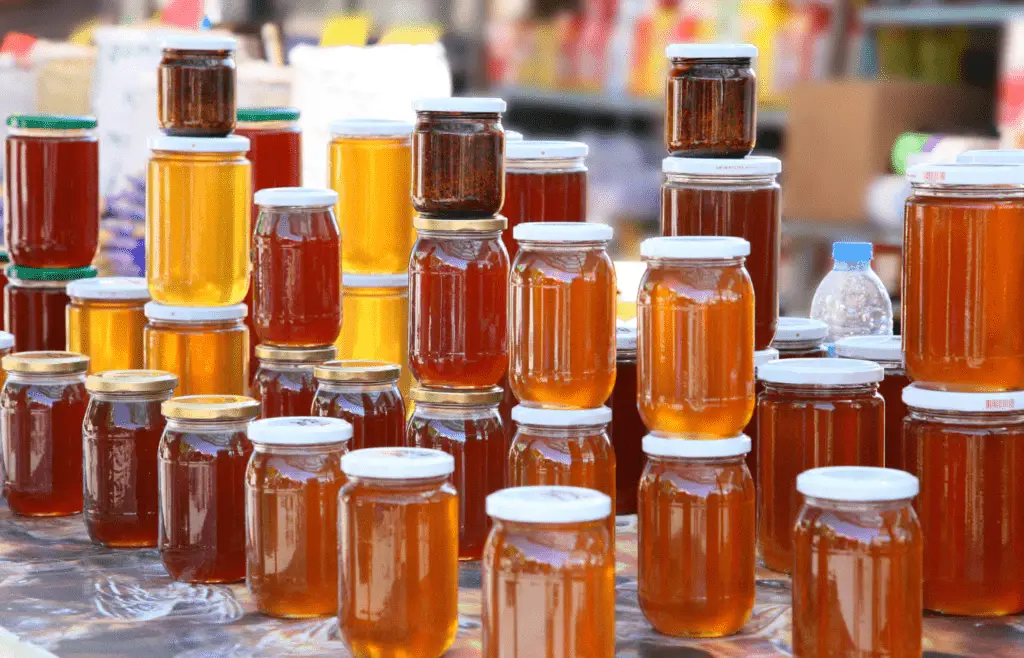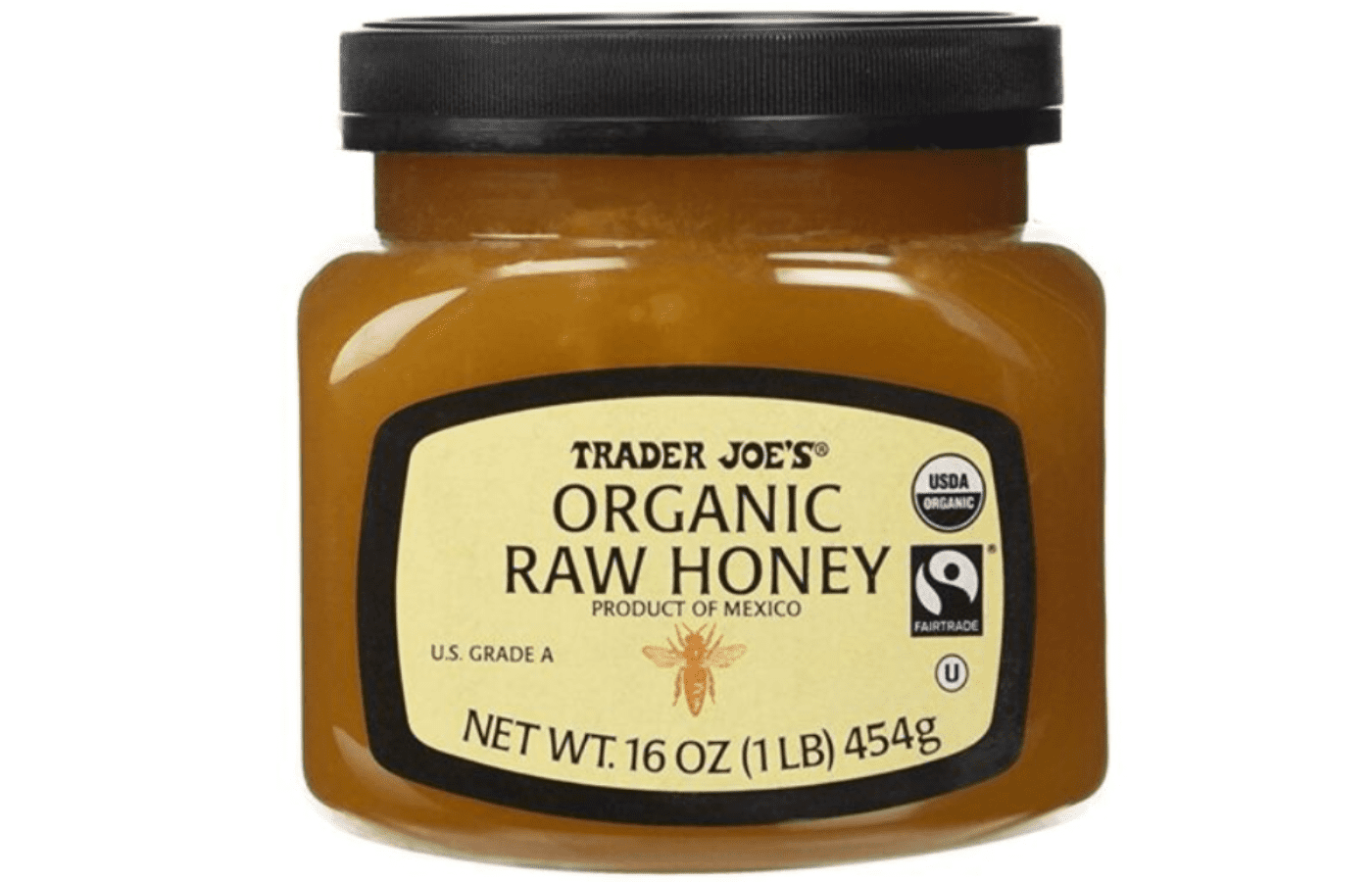There’s been a huge to-do about honey over the last couple of decades. In fact, most honey purchased in the store these days isn’t honey at all, but colored high fructose corn syrup. This means everywhere you can buy honey has the potential to be fake or altered in some way, even at some natural food stores.
So, it begs the question: is Trader Joe’s honey real? The answer is a resounding, “maybe.” Some problems with their honey raise questions. First, a woman sued them for mixing other honey with their manuka types, selling it as “pure.” The other is that most honey sold in the US comes ultra-filtered to remove most of the pollen.
This is why it’s so important to understand if the honey you have is authentic or not. While it is possible to find real honey, the prospect is becoming dismal due to a lack of consumer wisdom and scrutiny.
What is Honey?
Honey is a byproduct of bees, those beautiful little striped insects buzzing around from spring to early autumn. Bees produce this very thick and sweet substance by gathering sucrose secretions from flowers. They refine the pollen through enzymatic activity as well as regurgitation and hive storage.
They stockpile honey within a waxy, resinous structure, such as a honeycomb or other pot-like formation. They create this as a means of food preservation throughout the cooler months of the year, when it’s far to frigid outside to forage.
Taste ; Uses
It’s sweetness is comparable to that of table sugar but it’s much healthier for you. It makes a good replacement in some recipes requiring simple syrup, corn syrup or for those people who suffer from a disorder related to sugar, like diabetes or tooth sensitivity.
Even still, it’s good for a variety of foods and beverages. Smoothies, cereal, tea, dessert frosting, granola bars and water all benefit from a dash of honey. It gives these a perfect amount of sweetness that satisfies.
Types of Honey
There are several types of honey too. These rely on the bee species producing the honey along with the flowers they frequent. There is clover, manuka, buckwheat, acacia, eucalyptus, fireweed, orange blossom, sage and tupelo.
Factors to Consider When Evaluating Honey

Because there are many types and varieties of honey, a lot of fake honey gets past us in the public sphere. But, there’s a way to know if the honey you have is fake by looking at the color, checking its aroma and knowing it how it should taste.
The first thing you should do is inspect the package and the label. Look at the ingredients list to see if it indicates anything like high fructose corn syrup, sucrose or glucose. If it doesn’t say “honey,” then it’s likely fake.
Honey shouldn’t taste like pure sugar with a faintness of honey-like flavor. There should be notes of herbs and flowers that provide a noticeable earthy hint on the tongue.
The viscosity of honey is another indicator. A small drop on your finger shouldn’t spread, it should hold its position without moving. However, some brands are a little runny.
Other Tests
There are other checks too:
- Add a few drops of vinegar in a container with honey and water. If there’s foam, it means there’s plaster.
- Over the course of time, honey should crystallize and be difficult to squeeze out of the bottle. If not, it means it underwent pollen filtration. Manufacturers tend to do this to hide its source of origin.
- Put a drop of honey onto a matchstick and fire it up with a lighter. If it ignites, it’s real honey.
- If a globule sinks to the bottom of a glass of water without dissolving, it’s real.
- Add a few drops of iodine to a glass of water. Mix in about a teaspoon of honey. If it turns blue, it means cornstarch comprises the ingredients and is, therefore, not real honey.
Analysis of Trader Joe’s Honey
All of the varieties of honey found at Trader Joe’s indicate the area or region from where the honey comes. Different stores will procure their honey from the surrounding location.
For instance, Michigan features Michigan honey from clover but they also feature manuka honey sourced from New Zealand.
To check the current price and availability of Trader Joe’s Organic Raw Honey, click here to view the listing on Amazon.
2018 Lawsuit vs. Food Tests
However, a lawsuit filed against Trader Joe’s in 2018 indicates evidence for how the company mixes some of their varieties of manuka honey with regular honey. This is misleading to consumers.
But, in a survey done by Food Safety News, they found all bottles tested had the appropriate amount of pollen included with the product. This a sure indicator of Trader Joe’s honey authenticity.
General Reviews
Plus, many happy consumers rave about Trader Joe’s honey and indicate they’ve done the appropriate tests to assure its realness for themselves.
So, even if they are blending other honeys in with the manuka, they’re still using real honey, albeit a deceptive practice.
Frequently Asked Questions
Where Does Trader Joe’s Get Their Honey?
Trader Joe’s gets honey from the vicinity surrounding a particular location. This means the honey you find at a Michigan store will be from a beekeeper in that state.
However, exotic selections, such as manuka honey, come from New Zealand.
Which Honey Brands Are Real Honey?
Some brands containing bona fide honey are:
- Nature Nate’s
- Desert Creek Ranch
- Kiva
- Ziyad
- Thrive Market
- Bee Harmony
- Prince and Spring Organics
- Steens
- Wedderspoon
- Honey Tree
Final Thoughts
While you can assume Trader Joe’s honey is real, you should perform various checks to ensure it. In the event you find it isn’t real, bring the results of your tests along with the jar to any store. They’ll give you a replacement or refund your money.
But, if you want to be certain it’s real without having to check it every time you buy honey, you must find a reputable source.
This means going to places like farmer’s markets or finding your local beekeeper and buying it directly from them.


